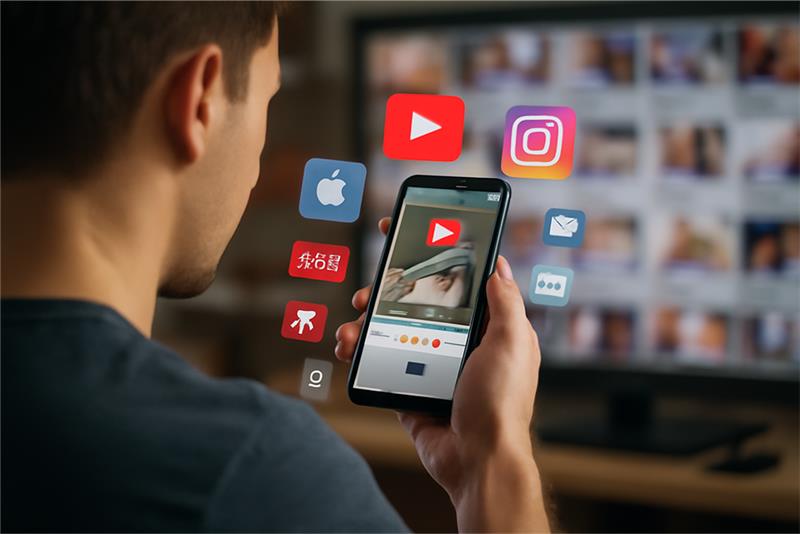The impact of social video platforms on consumer behavior

Social video platforms like TikTok and YouTube are reshaping how consumers discover, evaluate, and purchase products.
As attention spans shrink and skepticism toward digital advertising grows, these platforms offer immersive, visual-first experiences that are influencing trends across fashion, food, and entertainment. For market researchers and marketers alike, adapting to these shifts is no longer optional, it’s imperative.
Let’s understand the impact of social video platforms on consumer behaviour in recent times.
TikTok and the rise of seamless social commerce
TikTok Shop has quickly become a turning point in the e-commerce space. In just over a year, half of US monthly TikTok users reported making a purchase through the platform. Its success lies in frictionless in-app transactions combined with influencer-driven product demos, relatable content, and viral challenges.
- User intent is high, with 90% of users who bought once said they would do so again.
- Top-selling categories include fashion, beauty, food, and collectibles.
- Purchase integration is seamless, as buying becomes instant once payment is set up.
This model offers a blueprint for future social commerce strategies: make it native, visual, and social.
YouTube’s evolution from podcast platform to retail stage
YouTube isn’t just for entertainment anymore, it’s a multi-layered advertising and sales platform, especially through podcasts and long-form content.
- Over 30% of weekly podcast listeners now use YouTube, surpassing Spotify and Apple Podcasts.
- Video podcasts allow advertisers to combine visual branding with host-read ads, increasing authenticity and memorability.
- Brands are leveraging the format to insert live product demos, studio logos, and QR codes for direct sales.
This visual evolution of podcasting enhances trust while enabling deeper consumer engagement, especially important in an era where skepticism toward online content is rising. Hence, market research must now factor in not just what people buy, but why they trust one source over another.
The blending of lifestyle, food, and luxury brands
What once involved research and comparison now often happens in the span of a single scroll. With creators demonstrating product use in real life, purchase decisions are increasingly made at the moment, influenced by social proof, relatability, and visual appeal.
Emotional resonance, background music, and even editing styles subtly guide perception and preference. As a result, brands must rethink how they advertise and blend into native social ecosystems, becoming part of the conversation rather than interrupting it.
However, social platforms are now moving beyond delivering purchases and shaping identity and lifestyle. Designer labels are expanding into food and drink to create Instagrammable experiences.
- Louis Vuitton, Armani, Coach, and Alaïa opened cafes and restaurants to attract younger, aspirational audiences.
- Conversely, food brands like Sweetgreen and Coca-Cola launched fashion collections and accessories.
This cross-category engagement, popularized on TikTok and Instagram, highlights a powerful insight: consumers are not just buying products but buying into stories, values, and aesthetics.
How video-first platforms are reshaping market research strategies
In 2025, video-driven platforms like TikTok, Instagram Reels, and YouTube Shorts are not just entertainment hubs but behavioral goldmines. As these platforms increasingly set the tone for consumer trends, traditional market research tools like surveys and focus groups are struggling to keep pace.
Static data points can no longer capture the fluidity of digital culture. Instead, market research must evolve into a more dynamic, socially aware discipline.
Brands now need to track short-form video trends in real-time, identifying shifts in language, aesthetics, and viral behaviors as they emerge. Measuring influencer reach is not enough; researchers must evaluate authentic engagement and emotional resonance, as these factors drive trust and conversions.
Video sentiment analysis, including tone, facial cues, and comment section discourse, offers a window into raw consumer reactions that no questionnaire alone can replicate.
To stay competitive, companies must integrate quantitative data with qualitative cultural decoding, anchoring their strategies in the emotional rhythms of social media in real-time.
How IRB is tackling the shift to video-first market research
As TikTok, Reels, and Shorts reshape consumer behavior, IRB (Internet Research Bureau) is redefining market research to keep pace. Instead of relying solely on static surveys, IRB integrates real-time video sentiment analysis and behavioral tracking to decode how consumers truly feel and engage. By analyzing facial expressions, tone, and even comment section discourse, they uncover raw, unfiltered consumer feedback.
Beyond surface metrics, IRB uses AI-driven insights like watch time, replays, and engagement spikes to reveal deeper intent. This blend of hard data and cultural insight helps brands respond faster, design smarter campaigns, and connect more authentically with today’s video-native audiences. In a landscape where trends shift by the hour, IRB brings clarity, speed, and emotional depth to market intelligence.
Conclusion: A new consumer era is emerging, driven by video
Platforms like TikTok and YouTube are now in the active stages of discovery, decision-making, and purchasing. As trust becomes scarce and attention more fragmented, brands that combine authentic storytelling, seamless commerce, and trusted creators with proper research metrics will thrive. For market researchers, the mandate is clear: evolve with the consumer or risk being left behind.